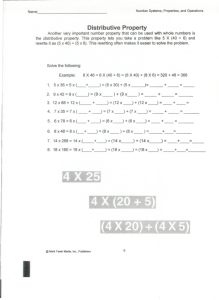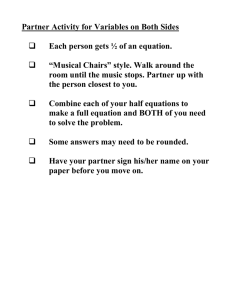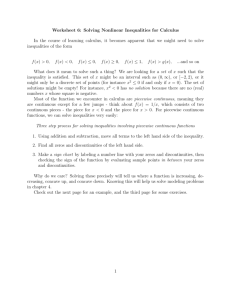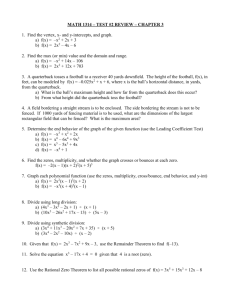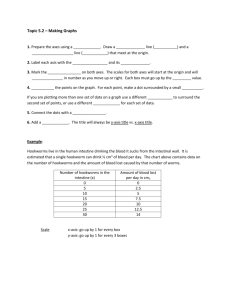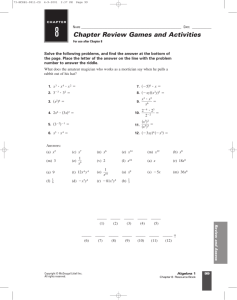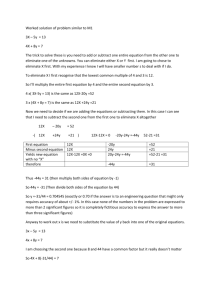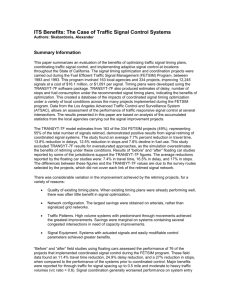Volumes by Cylindrical Shells. Disc Method
advertisement
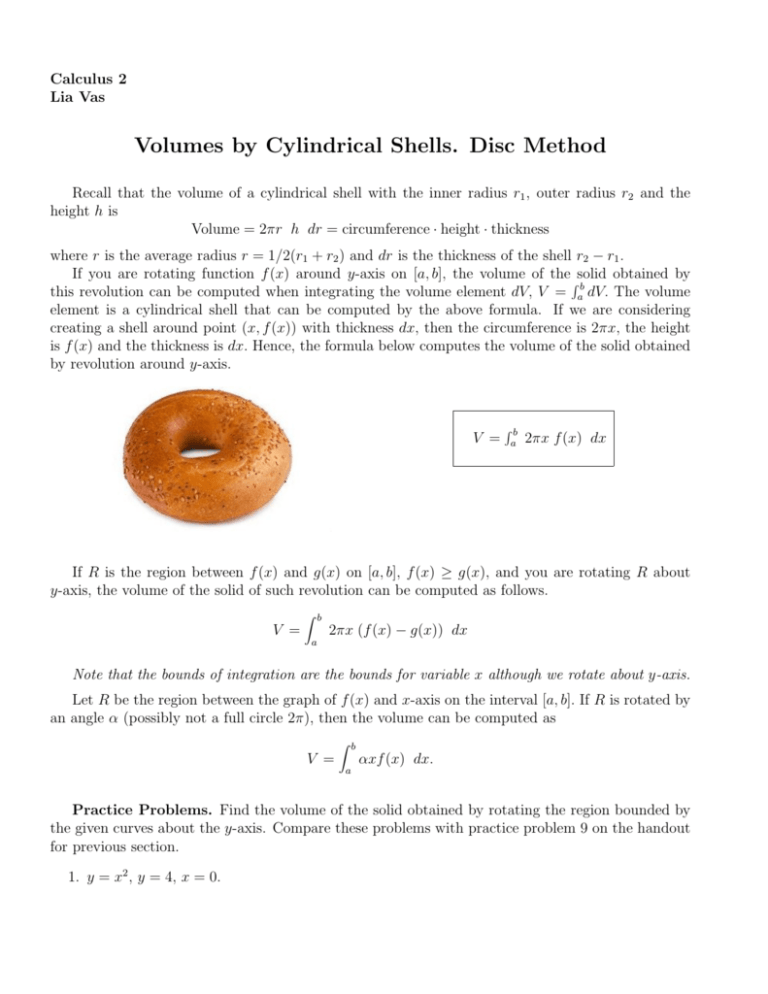
Calculus 2 Lia Vas Volumes by Cylindrical Shells. Disc Method Recall that the volume of a cylindrical shell with the inner radius r1 , outer radius r2 and the height h is Volume = 2πr h dr = circumference · height · thickness where r is the average radius r = 1/2(r1 + r2 ) and dr is the thickness of the shell r2 − r1 . If you are rotating function f (x) around y-axis on [a, b], the volume of the Rsolid obtained by this revolution can be computed when integrating the volume element dV, V = ab dV. The volume element is a cylindrical shell that can be computed by the above formula. If we are considering creating a shell around point (x, f (x)) with thickness dx, then the circumference is 2πx, the height is f (x) and the thickness is dx. Hence, the formula below computes the volume of the solid obtained by revolution around y-axis. V = Rb a 2πx f (x) dx If R is the region between f (x) and g(x) on [a, b], f (x) ≥ g(x), and you are rotating R about y-axis, the volume of the solid of such revolution can be computed as follows. V = Z b 2πx (f (x) − g(x)) dx a Note that the bounds of integration are the bounds for variable x although we rotate about y-axis. Let R be the region between the graph of f (x) and x-axis on the interval [a, b]. If R is rotated by an angle α (possibly not a full circle 2π), then the volume can be computed as V = Z b αxf (x) dx. a Practice Problems. Find the volume of the solid obtained by rotating the region bounded by the given curves about the y-axis. Compare these problems with practice problem 9 on the handout for previous section. 1. y = x2 , y = 4, x = 0. 2. y = x2 , y = x. 3. y 2 = x, x = 2y. 4. x + y = 2, y = x2 , x > 0. 5. y = x2 + 4 y = 6x − x2 . 6. y = x2 + 6 y = 2x2 + 2, x > 0. 7. y = −x3 and y = 12x − 7x2 . Solutions. 1. The curves y = x2 and y = 4 intersect when x2 = 4 ⇒ x = ±2. Since the region is bounded by x = 0 (y-axis), just one of the two intersections is relevant. So, the bounds of integration can be chosen to be 0 and 2 (note that 0,Rand -2 could work equally well). The curve y = 4 is R2 2 4 2 2 2 greater than y = x on (0,2). Hence, V = 0 2πx(4 − x )dx = 2π 0 (4x − x3 )dx = ( 4x2 − x4 )|20 = 2π(8 − 4) = 8π. 2. Intersections: x2 = x ⇒ x2 −x = 0 ⇒ x = 0, x = 1. y = x is larger thus V = 01 2πx(x−x2 )dx = R1 2 4 3 = π6 . 2π 0 (x − x3 )dx = 2π( x3 − x4 )|10 = 2π 12 √ √ 3. y 2 = x ⇒ y = √ ± x. Note that the curve x = 2y intersect just the positive√part of y = ± x. Intersections: x = x2 ⇒ 4x = x2 ⇒ 4x − x2 = 0 ⇒ x = 0 and x = 4. y = x is larger. Thus √ R . V = 04 2πx( x − x2 )dx. Compute this integral to be 64π 15 R Alternatively (probably easier), you can interchange the variables and and rotate the region between y = x2 and y = 2x about x-axis. The intersections are 0 and 2 and the integral R2 2 2 2 0 π((2x) − (x ) )dx computes the volume. 4. The curves y = 2 − x and y = x2 intersect at x = 1 and x = −2. WithR condition x > 0, the bounds are 0 and 1. y = 2 − x is greater than y = x2 on (0,1). So, V = 01 2πx(2 − x − x2 )dx. . Obtain that V = 5π 6 5. Intersections: x2 + 4 = 6x − x2 ⇒ 2x2 − 6x + 4 = 2(x R− 1)(x − 2) = 0 ⇒ x = 1, x = 2. y = 6x − x2 has larger values than y = x2 + 4 on (1,2) V = 12 2πx(6x − x2 − x2 − 4)dx. Simplify before integrating term by term. The answer is π. 6. Intersections: 2x2 + 2 = x2 + 6 ⇒ x2 = 4 ⇒ x = ±2. With condition x > 0, the bounds are 0 R2 2 and 2. y = x + 6 is larger on (0, 2). V = 0 2πx(x2 + 6 − 2x2 − 2)dx. Simplify, integrate and obtain V = 8π. 7. Intersections: −x3 = 12x − 7x2 ⇒ 0 = x3 − 7x2 + 12x = x(x2 − 7x2 + 12) = x(x − 3)(x − 4) ⇒ x = 0, x = 3 and x = 4. On interval (0,3), the curve y = 12x − 7x2 is greater than y = −x3 and on (3,4) the oppositeR is the case. So, the total volume can be found as the sum of two R4 3 2 3 integrals V = V1 + V2 = 0 2πx(12x − 7x − (−x ))dx + 3 2πx(−x3 − 12x + 7x2 )dx. Obtain that V = 106.18.

